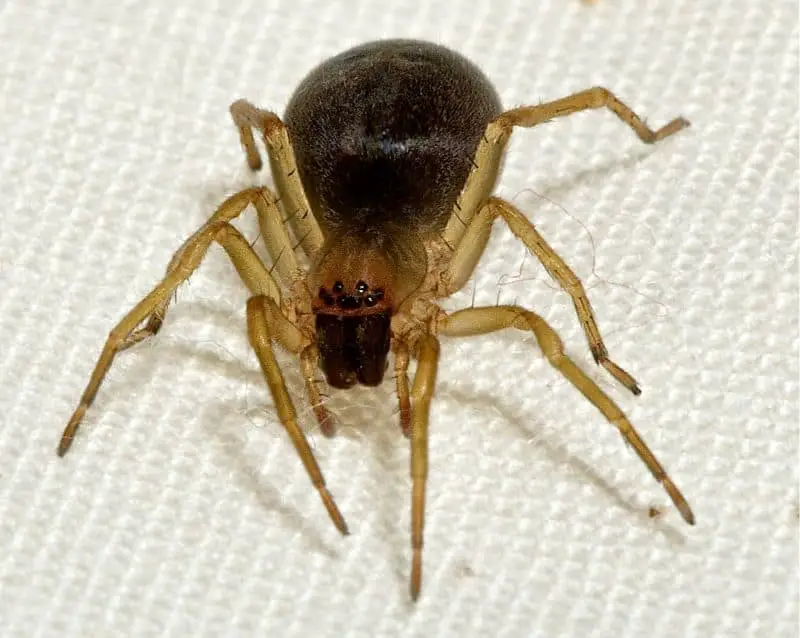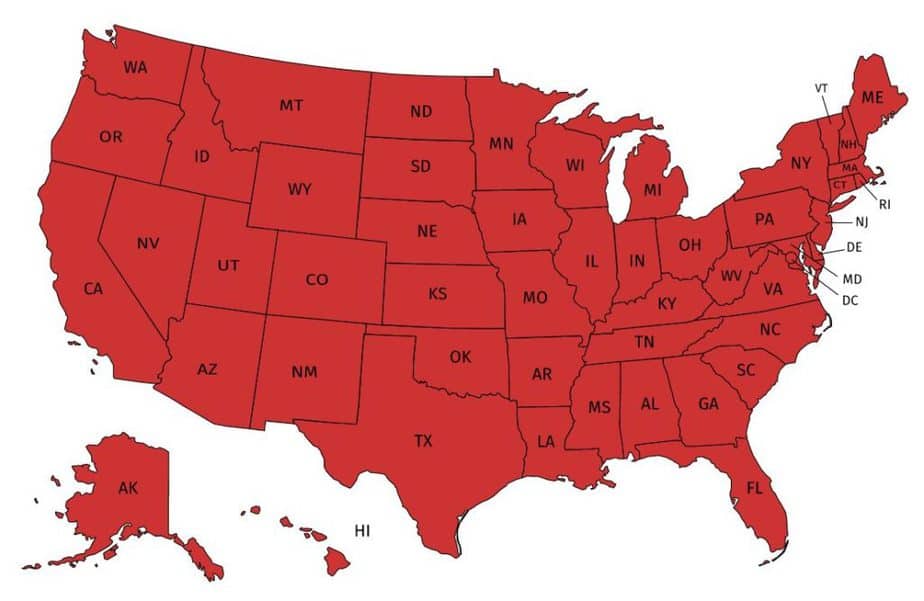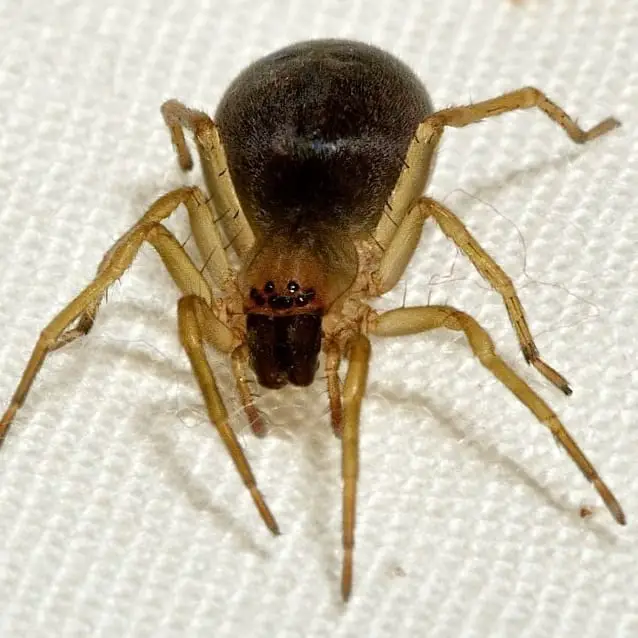Spiders of the genus Clubiona, commonly called leaf-curling sac spiders, can be found throughout the world and in every US state.
Clubiona Description
Clubiona spiders usually have light-brown legs and cephalothorax and a slightly darker abdomen. Their legs and head may even appear transparent at times due to the light color.

Bite
As with any sac spider, the bite of a leaf-curling sac spider may cause some minor pain but is not dangerous for humans or larger pets.
Leaf-Curline Sac Spider Scientific Classification
- Kingdom: Animalia
- Phylum: Arthropoda
- Subphylum: Chelicerata
- Class: Arachnida
- Order: Araneae
- Infraorder: Araneomorphae
- Family: Clubionidae
- Genus: Clubiona
Distribution of clubiona spiders in the USA

Various species of the clubiona genus can be found in every US state – Alabama, Alaska, Arizona, Arkansas, California, Colorado, Connecticut, Delaware, Florida, Georgia, Hawaii, Idaho, Illinois, Indiana, Iowa, Kansas, Kentucky, Louisiana, Maine, Maryland, Massachusetts, Michigan, Minnesota, Mississippi, Missouri, Montana, Nebraska, Nevada, New Hampshire, New Jersey, New Mexico, New York, North Carolina, North Dakota, Ohio, Oklahoma, Oregon, Pennsylvania, Rhode Island, South Carolina, South Dakota, Tennessee, Texas, Utah, Vermont, Virginia, Washington, West Virginia, Wisconsin, Wyoming


I have seen alot of these in the past day working in my yard. Particularly around my flowering plants. I cannot find a match on your site that looks like it. I am in the mountain Callie’s of Virginia. This spider was small in size maybe a dime at the most, appears grey or almost translucent. The legs are close to the same length. The bottom is very very rounded however, I thought at first it may be about to lay some eggs or whatever they do. I just want to know, for my own piece of mind since I have found them in the yard and have children who play outside all the time, what kind they are and if they are dangerous to us. There was no seen webs or nests. Also I have seen multiples in close proximity to eachpther suggesting they like to be near eachother. Please please help asap.
Found in east Texas (Hawkins – between Tyler and Longview) I believe it’s about 1/2 inch
Hello Lynn, thanks for reaching out! This is some type of leaf curling sac spider of the genus Clubiona. It’s not a medically significant spider: https://usaspiders.com/clubiona-leaf-curling-sac-spider/
Hello John, thanks for getting in touch! I am not 100 % sure about the ID of this spider. It’s definitely not one of the few medically significant spiders found in your area. Our best guess is that this is a leaf-curling sac spider, Clubiona sp. Here is more information about them: https://usaspiders.com/clubiona-leaf-curling-sac-spider/
Here is an image of a similar looking specimen in that genus (Clubiona riparia): https://bugguide.net/node/view/526752
Let us know if you think that it was not this spider. If you have another picture showing the eyes of cephalothorax, that might help too. Cheers!
White/ Ever so slight shade of blue/green color. Body is somewhat smaller than or same size as a nickel. Large and round. No protrusions from the back of the body. Typical oval type of web, long singular strand webs attaching to trash can and fence.
I found this spider in a wall inside the house and have seen it in the garden also in Ontario CA. It has a brown color with a darker reddish brown thorax. The leg span is around 0.5 inches.
Hello R, thanks for getting in touch! This is most likely a leaf-curline sac spider (Clubiona sp.): https://usaspiders.com/clubiona-leaf-curling-sac-spider/
It’s definitely not medically significant.
Boulder, Colorado, November, 2021, inside, on a window ledge. So far has resisted 2 runs through your identification algorithm. First time I have taken a picture that so clearly showed all 8 eyes, incidentally, tho it appears to have something in its eye, so to speak.
Sorry, I thought the previous submission had not gone through or I had made some kind of mistake. Please feel free to delete it.
Hi Matt, I think this is a leaf-curling sac spider (Clubiona sp.): https://bugguide.net/node/view/1604902/bgpage
Hatch recently occurred this spring and this is an example of a young spider; they like to live in my lettuce plants. My main concern is if they’re poisonous.
Hello Deana, this is some type of sac spider, possibly Clubiona sp.: https://usaspiders.com/clubiona-leaf-curling-sac-spider/
As almost all spiders, they are venomous but not a medical concern for humans or pets. A bite can be similar to a bee sting.
I photographed this spider back in 2020. It was a medium sized spider that resembles a Clubonia sp, however it has pronounced banding on the legs and the abdomen is on the smallish side. Perhaps it is a male.
What species Cheiracanthium?
Hi Jim, this is a sac spider – but not a yellow sac spider of the family Cheiracanthiidae. Its a sac spider of the genus Clubiona: https://usaspiders.com/clubiona-leaf-curling-sac-spider/
Hi,
I live in Bellingham, Wash. I found this guy as my cat was playing with it.
It was quick. It’s not a spider Ive seen here.
Hi Paul, this is most likely a sac spider of the genus Clubiona: https://usaspiders.com/clubiona-leaf-curling-sac-spider/